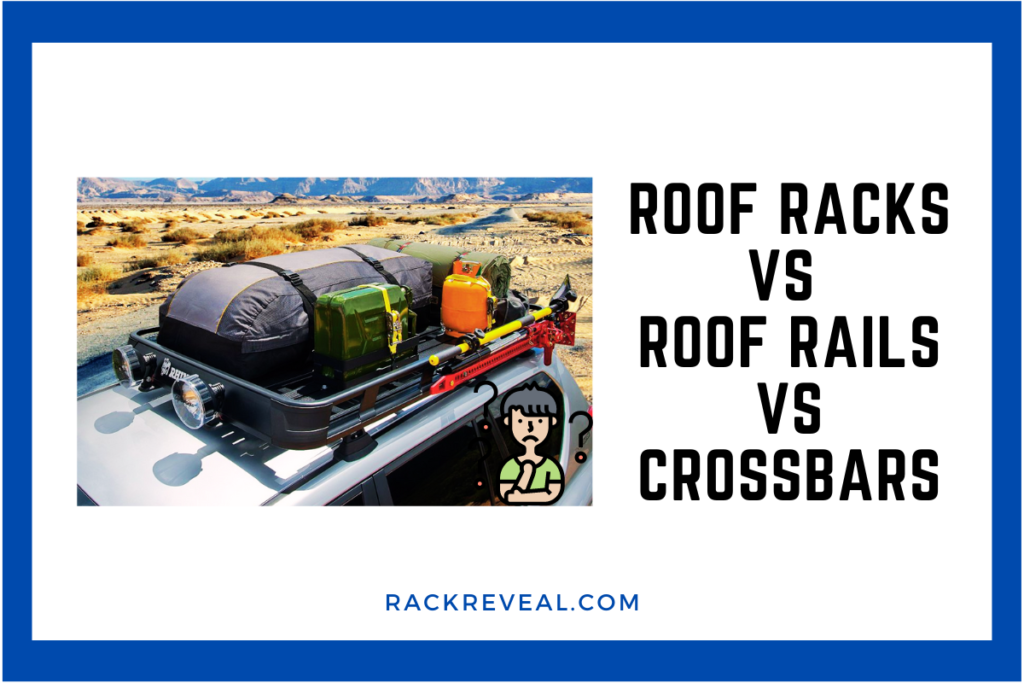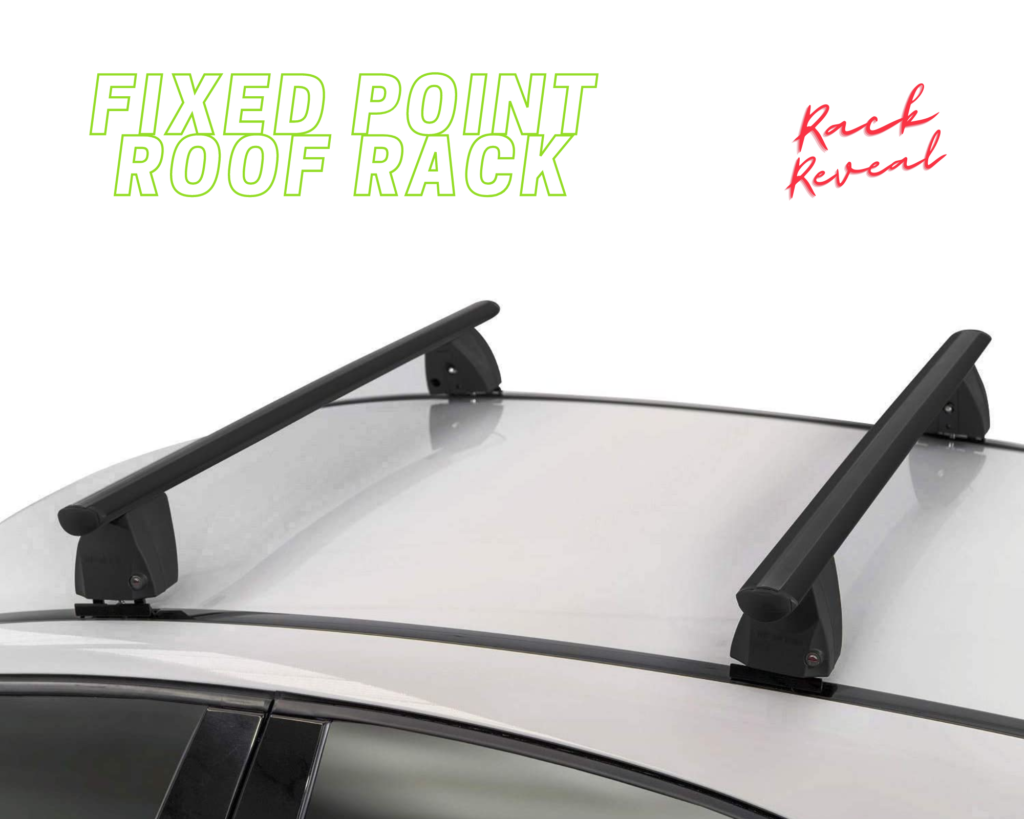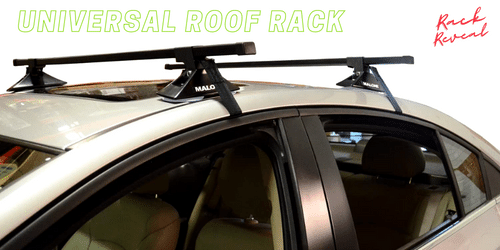Have you ever considered the importance of choosing the right roof storage solution?
With so many options available in the market, it can be overwhelming to decide which one is the best fit for your needs. Choosing the right roof storage solution can save you time, money, and even enhance the look of your car!
Roof racks, roof rails, and crossbars all offer different advantages, but which one is the best for your needs?

This article will explore Roof Racks vs Roof Rails vs Crossbars, and help you determine which one is the best for your vehicle and purpose. We’ll cover the pros and cons of each, as well as the key factors to consider when making your decision. With this comprehensive guide, you’ll be able to find the perfect roof rack system to meet your needs, and make the most of your vehicle’s storage space. Whether you’re an avid outdoor enthusiast, a weekend adventurer, or simply need extra space, we’ve got you covered.
Let’s dive in and find the perfect roof storage system for you!
Table of Contents
What are Roof Racks?
Roof racks are a versatile and convenient solution for carrying items on your vehicle’s roof. They typically consist of two towers that are mounted to the roof of your vehicle, with crossbars that run between the towers to provide a secure platform for your items. Roof racks can be used to carry a variety of items, including cargo boxes, bike racks, kayaks, and more.
One of the key benefits of roof racks is that they are highly versatile and can be easily reconfigured to accommodate different types of items. They can also be removed when not in use, so you can return your vehicle to its original appearance.
Types of roof racks
There are several types of roof racks available for different types of vehicles. Here are a few of the most common types:
Fixed Roof Racks: A fixed roof rack is a permanent addition to the vehicle, and it is designed to carry larger and heavier loads.


Universal Roof Racks: A universal roof rack can be easily installed to any models of the car. Usually they attach to the tops of the door frames.
Factory Installed Roof Rack: This type of roof rack usually come installed on a car from the factory.
There are many accessories available for Roof rack. Roof basket, Cargo box, Ski/Snowboard Rack, Bike Carrier, Kayak / Canoe Carries are the most popular accessories.
Advantages of Roof Racks
- Increased Storage Space: Roof racks provide additional storage space that can be used to transport larger items such as camping gear, sports equipment, or even furniture.
- Convenience: Roof racks make it easier to transport larger items that would otherwise be difficult to fit inside a vehicle.
- Versatility: Roof racks are designed to accommodate a variety of items, so they can be used for different purposes.
- Improved Safety: By placing items on the roof, they are less likely to interfere with the driver’s vision or cause damage to the interior of the vehicle.
- Easy to Install: Many roof racks are easy to install and do not require any special tools or skills.
- Fuel Efficiency: By keeping items on the roof, the weight of the vehicle is more evenly distributed, which can improve fuel efficiency.
- Cost-Effective: Roof racks are a cost-effective solution for those who need additional storage space without having to purchase a larger vehicle.
- Increased Resale Value: Having a roof rack can add to the resale value of a vehicle, as they are seen as an added feature by many potential buyers.
Read Also: Hyundai Veloster Bike Rack
What are Roof Rails?
Roof rails, a popular roof-mounted accessory, run parallel to a vehicle’s length, made of metal or durable plastic and attached to specific points on a vehicle’s roof. Roof rails function as a sturdy platform for mounting various accessories, such as cargo boxes, kayak carriers, and bike racks. These accessories are helpful for people who require extra storage for their gear, equipment, and larger items, easily transported on top of their vehicles. Roof rails are renowned for their resilience and their capacity to endure harsh weather conditions, making them a favored option for outdoor enthusiasts and explorers.
Types of roof rails
There are several types of roof rails available for different types of vehicles. Here are a few of the most common types:
- Fixed Roof Rails: These are the most basic type of roof rails and are permanently attached to the vehicle’s roof. They are ideal for those who need extra storage space and want a low-profile solution.
- Adjustable Roof Rails: As the name suggests, these roof rails can be adjusted to fit different types of vehicles. They are ideal for people who want the option to remove the roof rails when not in use.
- Integral Roof Rails: These are roof rails that are built into the vehicle from the factory. They are often found on SUVs and crossovers and provide a more integrated look to the vehicle.
- Aluminum Roof Rails: These roof rails are made from high-quality aluminum, making them lightweight and durable. They are popular with people who need a sturdy and long-lasting roof rail solution.
- Aerodynamic Roof Rails: These roof rails are designed to minimize wind resistance and improve fuel efficiency. They are ideal for people who want to reduce their carbon footprint and save money on fuel costs.
Each type of roof rail has its own unique advantages and disadvantages, so it’s important to choose the right one based on your specific needs and preferences.
Advantages of roof rails
Roof rails offer several advantages that make them a popular choice for those who need extra storage space for their gear and equipment. Some of the key advantages of roof rails include:
- Increased Storage Space: Roof rails allow for easy and convenient transport of larger items on top of the vehicle, freeing up space inside the car for passengers and other belongings.
- Versatility: Roof rails can be used with a variety of different roof-mounted accessories, such as cargo boxes, bike racks, and kayak carriers. This makes them a versatile storage solution for outdoor enthusiasts and adventurers.
- Durability: Roof rails are often made from strong and durable materials, such as metal or strong plastic, making them able to withstand the elements and rough handling.
- Aesthetic Appeal: Some roof rails are designed to look good on the vehicle and can add to its overall style and aesthetic appeal.
- Improved Aerodynamics: Aerodynamic roof rails are designed to minimize wind resistance and improve fuel efficiency, making them a smart choice for people who want to reduce their carbon footprint and save money on fuel costs.
- Convenient Installation: Roof rails can be easily installed on most vehicles, and many models can be removed when not in use, making them a convenient storage solution for people on the go.
What are Crossbars?
Crossbars are another type of roof accessory for vehicles. They go across the width of the car, from one side of the roof to the other. People use crossbars to hold things like bikes, skis, or boxes on top of the car. Crossbars are usually made of metal or plastic and are attached to the roof of the car with special brackets. They can be adjusted to fit different sizes of things you want to put on top of the car. Crossbars are a great way to add extra storage space to your vehicle, especially if you’re going on a trip or need to carry large items.
Types of crossbars
There are several types of crossbars available for different types of vehicles. Here are a few of the most common types:
- Fixed Crossbars: These crossbars are permanently attached to the roof of the vehicle and cannot be removed. They are ideal for people who need extra storage space all the time.
- Removable Crossbars: These crossbars can be removed from the roof of the vehicle when not in use. They are ideal for people who only need extra storage space occasionally.
- Aero Crossbars: These crossbars are designed to reduce wind resistance and improve fuel efficiency. They are a great choice for people who want to save money on gas and help the environment.
- Lockable Crossbars: These crossbars come with a locking mechanism to help secure your gear and equipment. They are ideal for people who want to protect their belongings while traveling.
- Aluminum Crossbars: These crossbars are made from lightweight and durable aluminum. They are a popular choice for people who want a high-quality and long-lasting storage solution.
Each type of crossbar has its own unique advantages and disadvantages, so it’s important to choose the right one based on your specific needs and preferences.
Advantages of crossbars
Crossbars offer several advantages that make them a popular choice for those who need extra storage space for their gear and equipment. Some of the key advantages of crossbars include:
- Increased Storage Space: Crossbars provide a platform for carrying larger items on top of the vehicle, freeing up space inside the car for passengers and other belongings.
- Versatility: Crossbars can be used with a variety of different roof-mounted accessories, such as bike racks, ski racks, and cargo boxes. This makes them a versatile storage solution for outdoor enthusiasts and adventurers.
- Durability: Crossbars are often made from strong and durable materials, such as metal or strong plastic, making them able to withstand the elements and rough handling.
- Convenient Installation: Crossbars can be easily installed on most vehicles, and many models can be removed when not in use, making them a convenient storage solution for people on the go.
- Improved Fuel Efficiency: Aero crossbars are designed to reduce wind resistance and improve fuel efficiency, making them a smart choice for people who want to reduce their carbon footprint and save money on fuel costs.
- Secure Storage: Some crossbars come with a locking mechanism, helping to protect your gear and equipment from theft while traveling.
In summary, crossbars offer a convenient and versatile storage solution for people who need extra space for their gear and equipment while on the road.
Crossbars, Roof Racks, and Roof Rails: Main Differences
Crossbars are horizontal bars that attach to the roof of a vehicle and provide a sturdy platform for carrying items such as luggage, sports equipment, and even bicycles. They come in a variety of sizes and styles and can be adjusted to fit different widths of roofs.
Roof racks are larger systems that include crossbars and often additional components such as side rails or baskets. They offer greater capacity for carrying larger and heavier items and can be easily removed when not in use.
Roof rails are similar to crossbars but are integrated into the design of the vehicle. They are typically more aesthetically pleasing than crossbars and offer a sleek, streamlined look. However, they may not offer as much support as crossbars and may not be compatible with as many types of accessories.
In summary, crossbars are the basic platform for carrying items, roof racks are larger systems that offer more capacity and versatility, and roof rails are integrated into the vehicle’s design but may not offer as much support.
Roof Rack vs Roof Rails vs Crossbars: A Quick Comparison
Roof Rack
- A roof rack is a system that consists of bars attached to the roof of a vehicle to carry items such as bikes, skis, or cargo boxes.
- They are typically made of aluminum or steel and are mounted on the roof of the vehicle using special brackets.
- Roof racks provide a versatile platform for carrying various types of equipment and are great for active individuals who need to transport gear for outdoor activities.
- They can also be removed easily when not in use.
Roof Rails
- Roof rails are strips of metal or plastic that run along the length of a vehicle’s roof and are used to attach roof-mounted carriers, such as bike racks, kayaks, and ski boxes.
- They are usually integrated into the design of the vehicle and are a permanent feature.
- Roof rails are ideal for vehicles that are not equipped with roof racks, but need a secure way to transport larger items.
- Some roof rails come with crossbars, while others require the purchase of separate crossbars.
Crossbars
- Crossbars are horizontal bars that run between the roof rails and provide support for items being carried on the roof.
- They are adjustable in length and can be locked into place, providing a secure connection for transporting items.
- Crossbars are essential for carrying heavy items on the roof, as they distribute the weight evenly and prevent damage to the roof of the vehicle.
- Crossbars can be purchased as a separate accessory and installed on vehicles equipped with roof rails.
Comparison of load capacity
Load capacity for roof storage solution depends on the size and material of the rails, but most roof storage are designed to carry loads up to 165 pounds.
Here is an example:
To calculate how much of load you can carry on your rack you first start with the weight limit listed for your vehicle. For example a vehicle that has a 165 lbs weight limit using baseline towers;
BaseLine Tower set of 4 = 5.2 lbs
Small Core bar pair = 9.00 lbs
2 FrontLoaders = 13 lbs each, 26 lbs total
Total weight = 40.2 lbs
Weight limit 165 lbs – 40.2 lbs rack & accessories = 124.8 lbs available load capacity
*Source: Yakima Support
What not to Load on Your Roof Rack / Roof Rails / Crossbars
- Overly heavy items
- Flammable materials / Hazardous chemicals
- Fragile items
- Tall and top-heavy objects
- Sharp or pointed objects
- Overhanging items
- Unsecured items
- Items that exceed the roof rack’s weight capacity
- Items that are too wide
- Items that obstruct license plates or lights
- Items that damage the roof
- Weather-sensitive items
Comparison of aerodynamics
When it comes to aerodynamics, roof racks are not as aerodynamic as roof rails or crossbars. The sidebars and crossbars of a roof rack create more drag and wind noise than roof rails or crossbars. This can result in lower fuel efficiency and a less comfortable driving experience.
Roof rails, on the other hand, are designed to be aerodynamic and provide a sleek look. They are typically made of aluminum or stainless steel, which are lightweight and durable materials. Roof rails also have a low profile, which helps to reduce drag and wind noise.
Crossbars are aerodynamic, as well, and provide a strong and sturdy platform for carrying cargo. However, their aerodynamics can be affected by the type and size of cargo that is carried on them. Larger and heavier items can create more drag and wind noise, reducing the aerodynamics of the crossbars.
Comparison in terms of cost
Roof racks typically cost anywhere from $150 to $500, roof rails cost anywhere from $100 to $300, and crossbars cost from $50 to $200, all depending on the type and brand.
Choosing the Right Roof Storage Solution
Choosing the right roof storage solution is crucial to ensure that you can safely transport your gear and belongings while driving. There are several factors to consider when selecting the right roof storage solution for your vehicle. Here are some factors to consider when choosing the right roof storage solution:
- Vehicle size and amount of storage space needed
- Weight of equipment to be stored
- Type of vehicle (compatibility with roof storage solutions)
- Specific needs and budget
- Durability and weather resistance
- Ease of installation and use
- Security features (locks, theft prevention)
- Brand reputation and customer reviews
- Warranty and customer support.
Wrap Up
In conclusion, when it comes to choosing between roof racks, roof rails, and crossbars, the best option depends on your specific needs and the type of vehicle you own. Roof racks offer versatility and can be used for a variety of items, while roof rails provide a sleek and stylish look to your vehicle. Crossbars offer stability and security, making them ideal for transporting heavier items.
Ultimately, the decision comes down to personal preference and the type of gear or things you plan to transport on top of your vehicle. If you’re still unsure, consider reaching out to a specialist or doing additional research to determine which option is best for your particular situation. You can also email to any popular brand through their website, such as, Thule, Yakima etc.
So, which one do you think is the best option for your vehicle? Roof racks, roof rails, or crossbars? Share your thoughts by emailing us: contact[at]rackreveal.com
